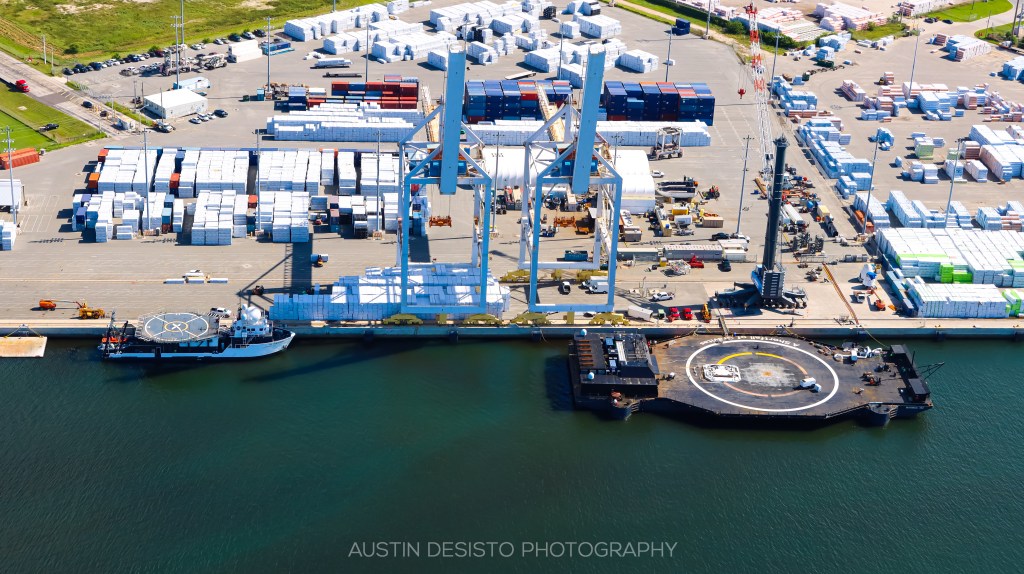
Seven years ago today marked the first time SpaceX landed a Falcon 9 first stage on a floating ocean platform. Explosions and mishaps led up to the shining moment of success when this difficult and new feat was finally achieved. Seven years later, SpaceX has completed 144 landings of a Falcon booster on a drone ship.
Currently, there are three active drone ships that regularly serve as landing platforms for Falcon 9 and Falcon Heavy’s first stages that launch from both coasts of the United States. All west coast launches are supported by Of Course I Still Love You (OCISLY), stationed in the Port of Long Beach. OCISLY was the Autonomous spaceport drone ship (ASDS) to serve the first landing on an ASDS on April 8, 2016.
On the east coast are two drone ships, Just Read The Instruction (JRTI) and A Shortfall Of Gravitas (ASOG), both stationed in Port Canaveral, Florida. Due to the high cadence of launches from the east coast, two drone ships are nearly required in order to support all the launches.

Out of all the successes come very few mishaps where boosters were unable to be recovered. Speaking strictly of landings on the water, since the first attempt in March of 2016, which resulted in a loss of the booster, SpaceX has failed to recover a booster during an ocean landing only 12 times.
Also worthy of note is that SpaceX achieved this success, seven years ago today, on their second-ever attempt at landing on a drone ship. The mission that saw a successful landing was CRS-8, which delivered cargo to the International Space Station (ISS) on a cargo dragon vehicle.
While SpaceX performs a combination of landings on both land and drone ships, this mainly depends on the mission requirements. If the payload is light enough to save propellant for a boost back burn towards land, then a landing at either Landing Zone 1 (LZ-1) or LZ-2 could be safer since these pads are on solid ground.
Additionally, all attempted landings in SpaceX history have been conducted by a mixture of Falcon 9s and Falcon Heavys. Up next is SpaceX’s attempt to catch a rocket in the chopstick arms of the Starship launch tower. Although, it may be a bit longer before we see that.
FTC: We use income earning auto affiliate links. More.




Comments